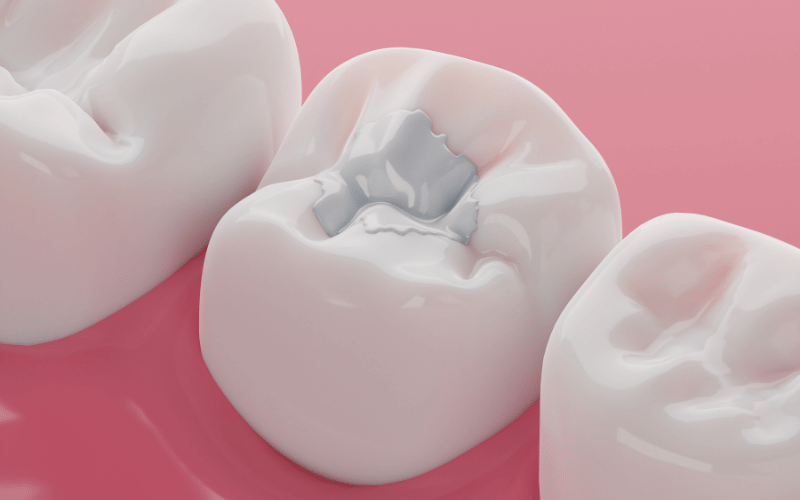Many individuals face oral health concerns due to tooth decay, cavities, or damaged teeth. Dentists advise individuals to undergo white fillings treatment for these dental issues, as it provides a natural-looking tooth. However, a significant concern is whether white fillings are good for our teeth.
To get the answer, we must first carefully understand white fillings.
White or composite fillings are dental treatments used to repair decayed or damaged teeth. Unlike typical silver amalgam fillings, white fillings are constructed of a tooth-colored resin substance that mixes in with natural teeth, making them a more cosmetically acceptable option. They are bonded directly to the tooth surface, increasing strength and durability.
Advantages of White Fillings
1. Aesthetics: White fillings are natural, blending seamlessly with the surrounding tooth enamel, unlike the conspicuous silver fillings.
2. Tooth preservation: White fillings necessitate minimal removal of healthy tooth structure, promoting stronger teeth in the long run compared to silver fillings.
3. Bonding: White fillings exhibit superior bonding capabilities. They form a tighter seal with the tooth surface, reducing the risk of leakage and future decay.
4. Versatility: White fillings are versatile and suitable for dental repairs, including smaller cavities, chips, cracks, and more extensive restorations.
5. Sensitivity: White fillings may induce less post-placement sensitivity, providing a more comfortable experience than silver fillings.
Disadvantages of White fillings
1. Cost: White fillings typically have a higher price tag than silver fillings, making them less cost-effective for some individuals.
2. Durability: There’s a chance that white fillings may chip or wear down faster than silver fillings, potentially necessitating replacements sooner, particularly in high-pressure areas of the mouth.
3. Placement time: Placing white fillings might require slightly more time than silver fillings due to the intricate layering process required to achieve optimal aesthetics and bonding.
Are White Fillings Better For Teeth?
White fillings offer superior aesthetics, minimal tooth structure removal, tighter bonding, versatility, and potentially less post-placement sensitivity. However, they have drawbacks, including higher costs, slightly reduced durability, and longer placement times.
While they may be preferred for their natural appearance and preservation of tooth structure, whether white fillings are better for teeth depends on individual needs, budget, and preferences. Consulting with a dentist can help determine the most suitable option based on filling location, oral health, and aesthetic considerations.
Wrap Up!
In conclusion, white fillings have emerged as the preferred choice for dental restorations, celebrated for their superior aesthetics, tooth preservation benefits, and versatile applications. While acknowledging factors like cost and durability, the advantages of white fillings, highlighted through their natural appearance and minimal tooth structure removal, often outweigh the drawbacks.
Consultation with a trusted dentist like Lakeshore Family Dental Care is essential for personalized advice. Book your appointment today for expert guidance on choosing the most suitable filling type to ensure optimal dental health and aesthetics.

